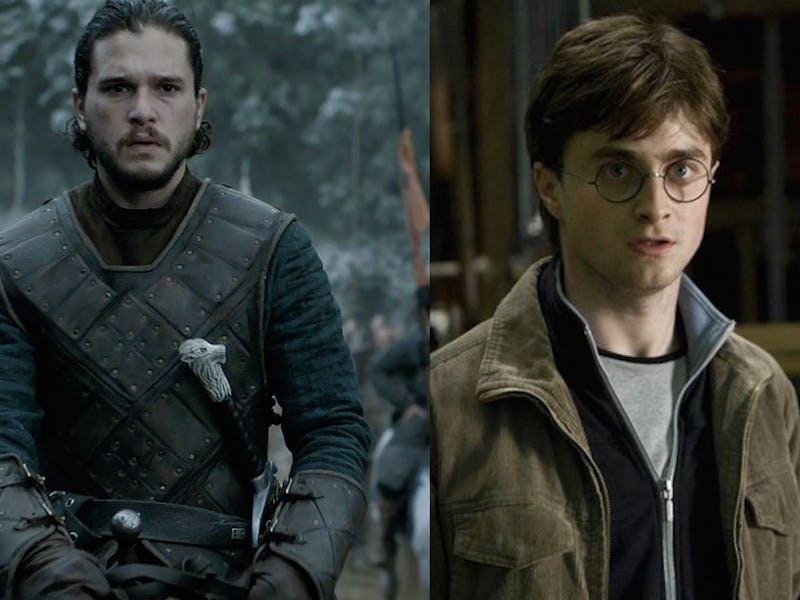Curious Parallels Between 'Game of Thrones' and 'Harry Potter'
Both fantasy franchises have a curious reliance on time travel when their respective creators back off.

From a distance, Game of Thrones and Harry Potter don’t seem to have much in common. Both are wildly popular fantasy franchises that deal with moral ambiguity, but one has darkness and terrible fates befalling good people and the other is Game of Thrones. But lately, the two stories share one curiously specific connection: when the creators back off, time-travel happens.
Consider the new play Harry Potter and the Cursed Child, which is somewhat disingenuously being advertised as “the eighth story.” If you’re not up to speed, a quick overview: It picks up at the Deathly Hallows epilogue nineteen years later, when the trio is 36 — even though Cursed Child does not seem to know Harry’s age, because its first page says Harry is thirty-seven. Alright, then.
The narrative follows Harry’s son Albus and Draco’s son Scorpius messing with Time Turners and trying to save Cedric Diggory. In the process, they accidentally create several alternate universes, including one in which Voldemort wins and another in which Ron and Hermione aren’t married, their daughter Rose fades from pictures, and Biff rules the world. Just kidding about that last part, although unfortunately we are not kidding about the development that Voldemort has a secret kid and Ron suddenly has Fred and George’s personality for some reason.
Thanks to the time-travel, the play is riddled with leaps in logic that counter the Potter canon, like Lily and James strolling around their neighborhood and their house being visible to any time travelers observing them — Fidelius charm? What Fidelius charm?
But there’s an explanation as to why the Harry Potter series, which is popular, in part, because it holds up to this kind of scrutiny, is suddenly plunging down this rabbit hole: J.K. Rowling didn’t write it, Jack Thorne did.
Similarly, Game of Thrones Season 6 ventured beyond George R.R. Martin’s books – and left to their own devices, creators David Benioff and D.B. Weiss leaned heavily on Bran Stark’s time-hopping as a means of exposition. Not only does he see the past, he also has a lasting impact on it.
Now, it should be stated that in both situations, the creators gave their blessings. J.K. Rowling did not write Cursed Child, but she bafflingly allowed it to happen, and according to Benioff and Weiss, Hodor’s true nature came to them from Martin himself — though Martin did specify that the books will handle it differently.
But the question remains: why is time travel the go-to plot device writers use when the original creators back off? Because it allows a story to convey a sense of movement and exposition without actually shifting the plot a great deal.
If we boil down Bran Stark’s storyline in Game of Thrones Season 6 to its bare essence, he was tripping balls in and around various trees. But it feels far more significant, because his journey allows him to uncover important information about Jon Snow’s mother. By the end of Cursed Child, nothing is changed, but Harry is able to forge a stronger connection with his son Albus. Game of Thrones demonstrates the non-lazy way to dive into the past — to unlock information that has a meaningful effect on the future. Harry Potter and the Cursed Child does it the slovenly way: To spin the plot like a hamster wheel, recycling old scenes without contributing anything more meaningful than the information that Draco now has a ponytail.
When creators back off their stories, it makes sense that the next gen resorts to time travel, so as not to move the plot too much while simultaneously disguising that fact. Time travel does not inherently have to be a negative plot device, so long as its navigated with care – and mischief is managed.